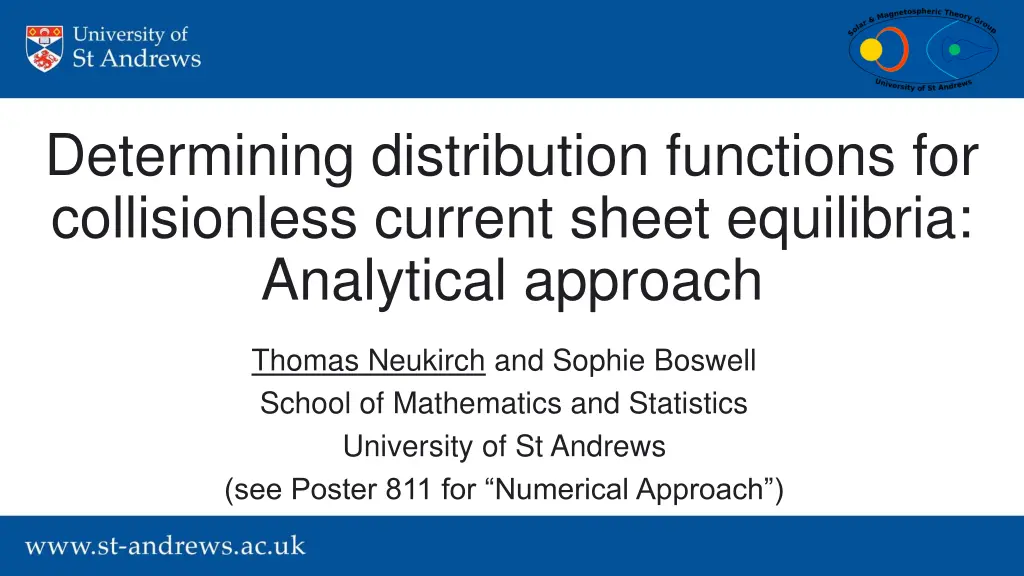
Analytical Approach to Determining Distribution Functions
Explore the analytical approach to determining distribution functions for collisionless current sheet equilibria in solar system plasmas. The study involves calculating current density, solving Ampère's Law, and addressing the inverse problem to find a self-consistent solution. Through methods like the Channell method and series expansion, solutions are sought for complex force-free Harris sheet configurations.
Download Presentation

Please find below an Image/Link to download the presentation.
The content on the website is provided AS IS for your information and personal use only. It may not be sold, licensed, or shared on other websites without obtaining consent from the author. If you encounter any issues during the download, it is possible that the publisher has removed the file from their server.
You are allowed to download the files provided on this website for personal or commercial use, subject to the condition that they are used lawfully. All files are the property of their respective owners.
The content on the website is provided AS IS for your information and personal use only. It may not be sold, licensed, or shared on other websites without obtaining consent from the author.
E N D
Presentation Transcript
Determining distribution functions for collisionless current sheet equilibria: Analytical approach Thomas Neukirch and Sophie Boswell School of Mathematics and Statistics University of St Andrews (see Poster 811 for Numerical Approach )
Current sheets are ubiquitous in solar system plasmas This talk: collisionless plasmas 1D (z dependence)
Distribution functions ??(??,??,?,??,?) Calculate current density ? ? = (??,??,0) Solve Amp re s Law for ?(?) and ?(?)
Inverse Problem: ? ? given (we are particularly interested in cases with ? ?, i.e. force-free) ? Want to determine a self-consistent ??(??,??,?,??,?)
Use method by Channell (1976): 1. Find ??? as a function of the vector potential ??,?? 2. Write ????,??,?,??,? exp ???? ? ??,?,??,? (? unknown) 3. Solve integral equation: ?????,?? = C K ??,??;??,??? ??,?? ?????? Usually splits into two 1D equations
Force-free Harris Sheet, ?? 0 ?? |?| Harrison & TN 2009; TN et al., 2009; Allanson et al., 2015, 2016
Problem 1: ???,1??cannot be found explicitly (known implicitly) Problem 2: How to solve the integral equation?
Analytical Method: Use Series Expansion Property of integral equation: Coefficients of power series for ???,1?? Coefficients of Hermite polynomial series for ?(??)! Use implicit differentiation to calculate coefficients Works well for simple test case ( normal Harris sheet)
Works in principle for our problem BUT coefficients become complicated very quickly! Only coefficients for even indices are non-zero
Works in principle for our problem BUT coefficients become complicated very quickly! Only coefficients for even indices are non-zero
Summary and future work ?? ?? 0 makes finding DFs for force-free Harris sheet more difficult (a lot!) Analytical approach using power series works in principle, but Need to check convergence (can use Allanson et al. 2016) and positivity of DF For complementary numerical approach see Poster 811
